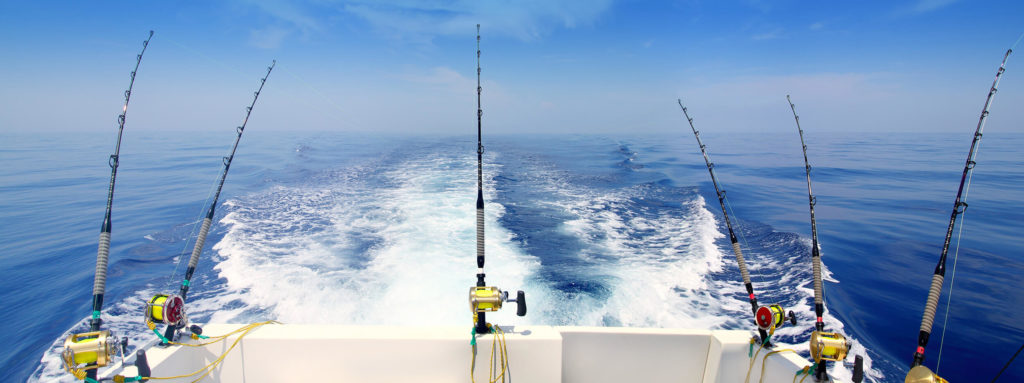Over more than ten years of working with technology scouts, we have come to respect them as well as enjoy their company – they are, after all, overwhelmingly open-minded, intelligent, externally focussed and therefore sociable, individuals.
They come from many disciplines and work in many different companies that operate in different ways, facing different challenges, creating frameworks within which the scouts work which will vary in significant ways.
However, for all the differences, we have found that tech scouts have three basic approaches that applies to all the different situations in which we have met them, and this article is going to talk about these three.
General comments
Scouts are not the end buyer of a technology in which they show interest. Usually scouting reports in a senior R&D executive, sometimes to a Business Development executive, but they do not have a budget of their own. Many companies will have committees that include other stakeholders in addition to R&D, such as engineering, operations or marketing, and always finance, that review proposed licence expenditure and agree whether it is worth the expense and resources that acquiring and then developing a promising technology would involve.
Scouts are a route into an organisation and, since they are tasked with bringing in new technologies, they are keen to talk to people with items of interest. This enthusiastic first encounter may not reflect the warmth of the review that will follow.
Three types of scouts
Depending on the needs of their company, scouts can be very focussed, or very unfocussed, open to anything that sounds exciting or entirely fixed on just one problem.
To clarify, when I say ‘very unfocused’ I do mean as long as it could be relevant to their employer – trying to sell a new design of a gas turbine to a drug company may not achieve very much. That said, the breadth of scouts’ interests can be surprising. One of the companies with which we have a long-standing relationship, PepsiCo, once took a team of people with PhDs in physics to visit the Rutherford Appleton Laboratory in Oxfordshire. The PepsiCo scientists were in the business of making potato chips (or crisps as we call them here). To me a crisp is a crisp, but to them it was three or four different crops, possible of different potato varieties, that had grown in different regions, with weather conditions that year that were favourable or not. And when they come out of the bag, they are meant to taste exactly the same, every time, according to the flavour promised on the packaging.
In their pursuit of better understanding of the process of frying crisps, they went to use a bit of kit that would allow them to film at the nanoscale, near molecular level, the surface of a piece of potato as it was being fried. It is work like this that has reduced the amount harmful oil used in the frying process and removed enormous amounts of salt, among other things. The point is, before this, it had not occurred to me that a food science lab like their, would contain people with physic doctorates wanting to visit a facility of that sort.
So, a technology scouting organisation may be much more diverse than you might imagine.
Let’s look at the three types of scouting activity, as we see it. We here call the three approaches ‘coarse fishing’, ‘deep sea fishing’ and ‘the careful shopper’.

Coarse Fishing
Coarse fishing involves fishing for certain types of fish, perhaps trout. These anglers only go to rivers known for trout, ignore perch and bream, carp and chub, and after years of visiting the same group of rivers, they know all the likely spots to find a trout and where best to stand in order to hook it.
In other words, this type of scouting produces specialists in fairly narrowly defined areas. These scouts may focus, for example, on one therapeutic area for a pharmaceutical company, or only those research centres with the equipment needed to prototype certain types of engine. They are usually very knowledgeable in their area and can, if we are honest, sometimes be rather arrogant. Like the Jedi librarian in the Star Wars movie, they tend to think ‘if I haven’t heard of it, it probably does not exist’. We have had conversations with people who have said things like ‘we do not have to look for interesting new molecules, we are so well known that everything that may be of interest will shown to us by the people developing it [looking for a deal]’, we tried suggesting that the scientist may not have been that proactive or have simply decided to talk to a rival instead, but our comments were brushed aside. Another time, we spoke to a specialist gas producer, who had 26 patents on the wall behind that he had himself filed. What this fellow did not know about the gas in question, we heard, was not worth knowing. However, he did concede that their current priority was miniaturising the equipment used for some of the processing of the gas and that there were probably people working on elements of the equipment manufacture that might be of interest.
If you have something of clear relevance to this person’s area of interest, you will find an engaged, extremely knowledgeable person to talk to. Trying to talk to them about anything else, even like the miniaturisation of certain types of equipment, will be a tough task. Because they know so much about their own area of expertise, they tend to be less willing to think about things that could be improved around the core of their area of interest.

Deep Sea Fishing
Deep sea fishers will reel in whatever Is swimming past, as long as it is thrilling. They really will not mind if it is a marlin, a barracuda or a shark: it just has to be exciting.
Another of our customers, a major automotive company, has scouts that have this approach. We ran an event once that had people mostly focused on healthcare devices that they decided to visit ‘because you never know what you will find’. They in fact managed to find a device, intended for a medical function (the inventor told me he had intended to try to sell it to J&J) which they saw could be reapplied in an automotive setting. They described it as the ‘find of the year’. (By the way, apologies for being so vague, but this company went on to invest tens of millions of dollars in this technology and if a client wants something kept private, that is how we keep it.)
The challenge here, obviously, is you will never know what may be of interest. The other, arguably bigger, problem is that the scouts themselves do not necessarily know whether an idea that strikes them as exciting will got the nod from the various stakeholders and gatekeepers back at Head Office. The idea may get a look of confusion from a funding committee or a look of horror from the Head of Engineering. Consequently, scouts of this sort (and this also applies to an extent for all scouts, even the more focussed and cautious) will want a portfolio of ideas to offer up for review internally and are likely to move on if an idea does not excite others fairly quickly.

The careful shopper
So far we have been talking about scouts, with a broader or narrower set of interests, who are keeping an eye for items that could be turned into new products or product enhancements.
But sometimes scouts are given a very specific challenge. An example would be a scenario from a consumer goods company. Another of our long-standing relationships is with Philips, which produces all sort of devices that use rechargeable batteries. Philips does not want to make batteries and is not an electro chemicals manufacturing company. It will work closely with its suppliers to co-innovate and feed back with testing of product enhancements from their supply-chain, of course, but if anyone were to come up with a better manufacturing method (making longer-lasting, quicker charging or less polluting batteries) they would still be very interested to hear about it, even if they then involve their supply chain in developing it.
Occasionally the situation is more dramatic. A while ago there was a story that did the rounds about a problem a major automotive company (not our client) was having with its engines. It needed a novel solution quickly and went out to the academic world to see what ideas people had to solve this particular problem. Unfortunately, people put 2 and 2 together and the company had some answers to come up with for its investor community. This sort of ‘solution for specific problem’ scouting resembles a visit to the hardware store to find a replacement for a broken hinge, where it is precisely one item that is required, that has to possess a set size and strength and colour, or it will not fit.
In these situations there is no point offering up exciting new alternative technologies or approaches, as R&D need precisely the widget that fits between two other widgets and if you do not have one, then the best way forward is to be clear and ask to whom else you could talk about your innovations, or if the same person, when to come back for a broader chat.
A few final thoughts
Of course, a large company may have scouts that exhibit all three styles of activity, with some very focussed, others much more open, others again with a puzzle to solve that has to fit a specific problem in need of a solution. They may be in the same team or in different teams (perhaps someone in R&D has been tasked with identifying the widget to fix the hole in the troublesome engine design), rarely but it does happen, the same scout may wear more than one of these hats.
In my experience, scouts usually have a very good idea of what their role is, but do not always do a good job of explaining it to those with whom they interact. However, with a few questions it is always possible to work out in which camp the particular scout with whom you are talking is sat.








